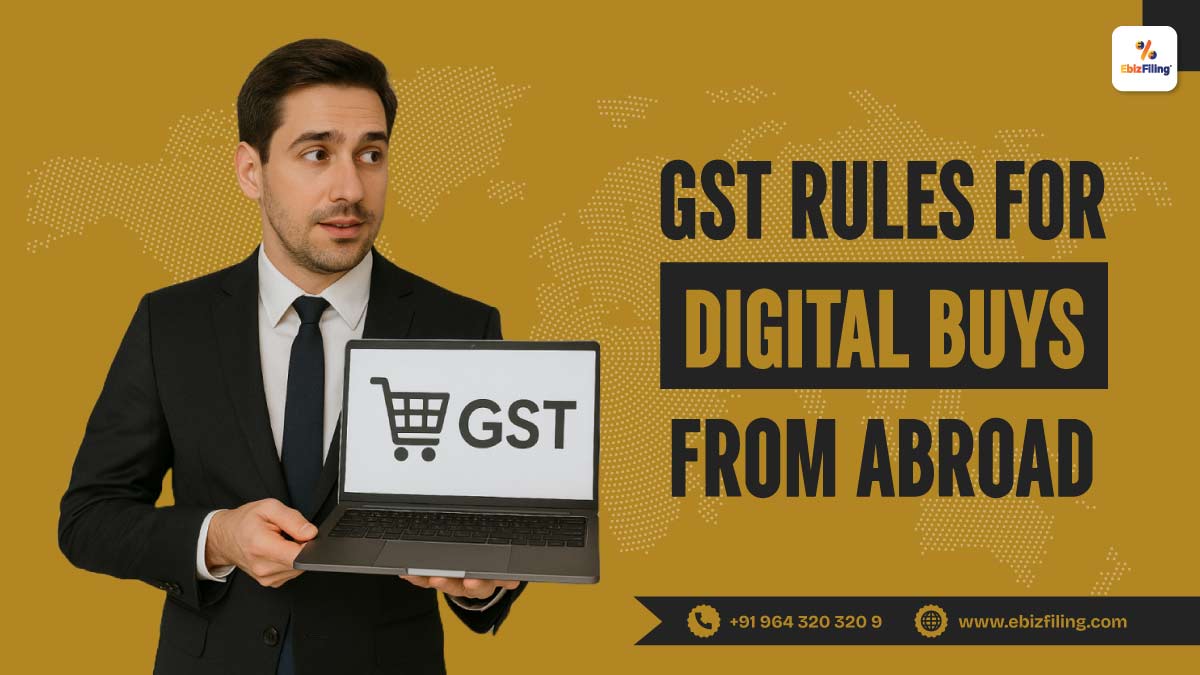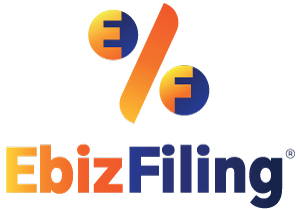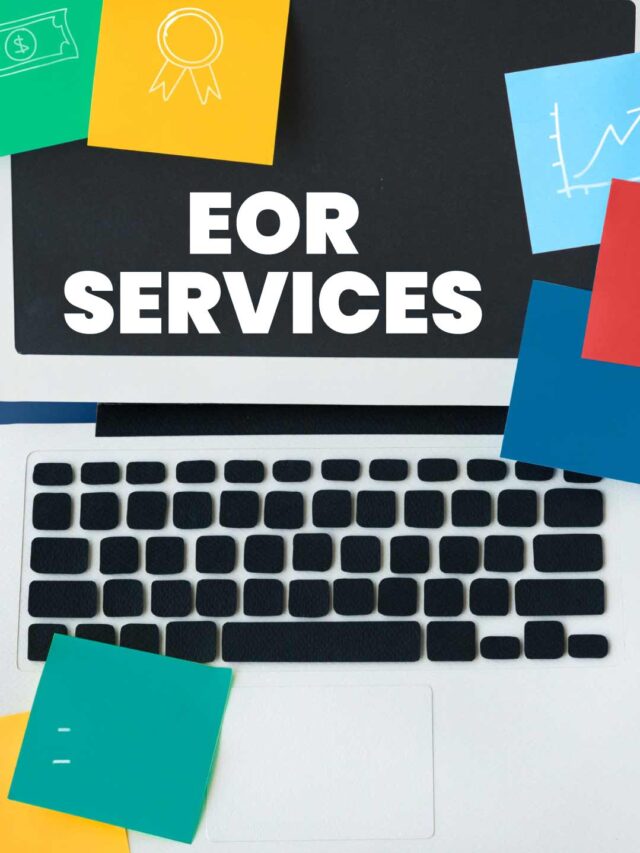
-
June 9, 2025
GST Implications on Foreign Digital Service Purchases by Indian Businesses
Introduction
If your business in India uses digital services from foreign companies like Adobe or Zoom, GST rules apply to you. Understanding how GST works on these purchases helps you stay compliant and save costs.
What Is a Foreign Digital Service Purchase?
Foreign digital services refer to any digital product or service bought directly from outside India. These include:
- Cloud-based software such as SaaS platforms (e.g., Zoom, Canva).
- Electronically downloaded software or licenses (e.g., Adobe Creative Suite).
- Digital content on physical media like CDs or USB drives.
- Custom-built software or services from foreign developers.
These purchases are considered imports of services or goods, depending on the type of digital product.
The content is sourced and verified from the below mentioned sites:
- GST Portal
- Income Tax Department
- Ministry of Corporate Affairs
When Does GST Apply to Foreign Digital Service Purchases?
GST applies to foreign digital service purchases when:
- The buyer is a GST-registered business in India.
- The service is imported from a supplier located outside India.
- The place of supply is in India as per GST rules.
In this case, GST is paid under the Reverse Charge Mechanism (RCM), where the buyer is responsible for paying GST instead of the foreign supplier.
What Is the Reverse Charge Mechanism (RCM)?
The Reverse Charge Mechanism means the buyer:
- Calculates and pays 18% IGST on the imported service value.
- Declares this GST in their GST return (GSTR-3B).
- Can claim the GST paid as Input Tax Credit (ITC) if the service is for business use.
Example
If you pay ₹1,00,000 to a foreign SaaS provider:
- You pay ₹18,000 as IGST under RCM.
- You claim ₹18,000 as input tax credit in your return.
What If You Are Not Registered Under GST?
If your business is not GST registered:
- The foreign supplier must register under the OIDAR scheme in India.
- The supplier charges 18% GST on the invoice.
- You cannot claim input tax credit in this case.
Many large platforms like Google, Microsoft, and Adobe comply with OIDAR rules.
How Is GST Charged on Different Types of Foreign Digital Services?
| Type of Digital Service | GST Rate | Classification | Comments |
|---|---|---|---|
| Cloud-based SaaS (e.g., Zoom) | 18% | Service | Fully taxable under RCM |
| Electronically downloaded tools | 18% | Service | Treated as imported services |
| Digital content on CDs/USBs | Varies* | Goods + Customs Duty | Customs duty also applies |
*Customs duty applies to physical media imports along with IGST.
Can You Claim Input Tax Credit (ITC)?
You can claim an input tax credit if:
- You are a GST-registered business.
- The digital service is used for business purposes.
- GST is paid under the Reverse Charge Mechanism.
This ITC can be claimed while filing the monthly GST return (GSTR-3B).
What Is the Role of TDS (Tax Deducted at Source) on Foreign Vendor Payments?
Payments to foreign vendors attract TDS under Section 195 of the Income Tax Act. Key points:
- TDS rate varies between 10% to 15% based on the country’s Double Taxation Avoidance Agreement (DTAA).
- You must file Form 15CA/15CB before making payments exceeding ₹5 lakh annually.
- TDS is deducted on the gross payment unless a lower rate is notified.
- Failure to deduct TDS leads to penalties and interest.
Why Is Compliance Important?
Failure to comply with GST and TDS regulations can lead to:
- Penalties and fines from GST authorities.
- Loss of input tax credit on foreign digital purchases.
- Notices and penalties from the Income Tax Department for missing TDS.
- Possible blocking of foreign digital services by vendors due to non-compliance.
Steps to Comply with GST on Foreign Digital Services
- Identify all foreign digital service purchases.
- If GST registered, pay 18% IGST under RCM and report in GSTR-3B.
- Deduct TDS as per Section 195 and file necessary forms.
- Maintain detailed invoices and payment records.
- Consult tax experts to avoid errors and penalties.
Real-Life Example: Bengaluru Tech Firm’s Compliance Journey
A tech company in Bengaluru bought a US-based SaaS subscription costing $1,000 per year. They asked if GST and TDS apply.
We advised:
- Yes, 18% IGST under RCM is applicable.
- Yes, TDS under Section 195 must be deducted as per DTAA rates.
- File Form 15CA and 15CB before payment.
- Maintain all documents for audit readiness.
This helped the company comply smoothly without penalties.
What Are the RBI Rules When Making Payments?
Indian banks require documentation to approve foreign payments:
- Form 15CB certified by a Chartered Accountant.
- Form 15CA filled by the payer.
- Appropriate RBI purpose codes (e.g., S0993 for software import).
These rules apply to payments exceeding ₹5 lakh/year under FEMA guidelines.
Conclusion
Understanding GST on foreign digital services is essential for Indian businesses. You must comply with the Reverse Charge Mechanism, claim input tax credit if eligible, and deduct TDS on payments to foreign vendors. Keeping proper records and consulting experts helps avoid penalties and keeps your business operations smooth.
Suggested Read :
Why GST Nil Return is Necessary?
GST Returns Filing For Multiple States
FAQs
1. What is Reverse Charge Mechanism in GST?
RCM means the buyer pays GST directly to the government instead of the supplier.
2. Do Indian businesses need to pay GST on foreign SaaS services?
Yes, if registered under GST, payment is made under RCM.
3. Can input tax credit be claimed on foreign digital services?
Yes, if GST is paid under RCM and used for business.
4. What happens if the business is not GST registered?
The foreign supplier must register under OIDAR and charge GST.
5. Is TDS applicable on payments to foreign vendors?
Yes, TDS under Section 195 applies.
6. What documents are needed for TDS compliance?
Forms 15CA and 15CB are required for payments above ₹5 lakh.
7. Are CDs or USB imports treated differently?
Yes, they attract customs duty and IGST.
8. What if the foreign vendor is not registered under OIDAR?
Buyer may be liable to pay GST under RCM.
9. How to report GST paid under RCM?
Report it in the GSTR-3B return every month.
10. Can non-business users claim input tax credit?
No, ITC is only available for business use.
GST Return Filing
File GST Return in Simple Steps with Ebizfiling
About Ebizfiling -










June 26, 2025 By Team Ebizfiling
LUT Renewal FY 2025-26: GST Exporter’s Checklist Introduction If you’re an exporter in India, you need to submit a Letter of Undertaking (LUT) each year to avoid paying IGST upfront on your exports. This is a facility given under Section […]
June 12, 2025 By Team Ebizfiling
SEZ GST Refund Rules: Claim Window & Late Filing Impact Introduction If you’re doing business with SEZ units in India, there’s a good chance you’re eligible for a GST refund. This is one of the key advantages the government offers […]
April 26, 2025 By Team Ebizfiling
GST Compliance Calendar with Due Date for FY 2025-26 And GST Return form The GST returns Compliance Calendar for 2025-2026 helps businesses keep track of important deadlines, including the Monthly GST Return Filing Due Date for returns like GSTR-1, GSTR-3B, […]